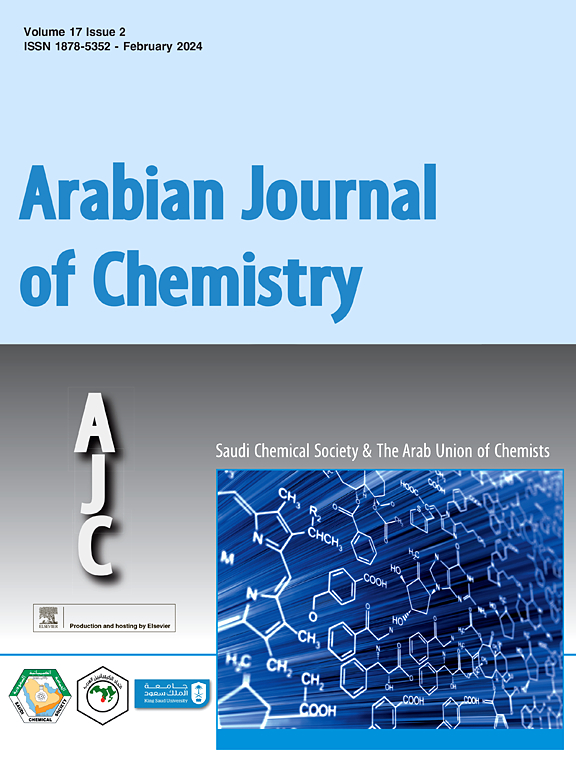Positive roles and synergistic mechanism of graphene oxide in improving fracturing fluid performances
IF 5.2
2区 化学
Q2 CHEMISTRY, MULTIDISCIPLINARY
引用次数: 0
Abstract
There has been growing interest in designing and developing polymeric nanoparticles in recent years. The inclusion of nanoparticles can enhance the performances of polymer solutions, including stability, rheology, and shear resistance. Nano-graphene oxide (Nano-GO) has been considered a superior nanoparticle for this purpose because of its robust thermal and mechanical properties. However, systematic studies on the application of graphene oxide nanoparticles in slickwater fracturing fluid have not been reported. Therefore, this study aims to improve the stability of nanoparticles, enhance the rheological properties of polymer nanofluids, and elucidate the synergy between nanoparticles and fracturing fluids through Fourier transform infrared spectroscopy and scanning electron microscopy. By evaluating rheological properties, drag reduction performances, and sand carrying capacity, this study confirms that the slickwater fracturing fluid added with Nano-GO (referred to as DRGO) meets the industrial requirement, and Nano-GO can significantly improve the rheological properties, apparent viscosity, as well as temperature and salt resistance of slickwater fracturing fluid. In terms of microstructure, the polymer molecules inside DRGO are closely overlapped to form a uniform network structure with greatly enhanced molecular chain strength.

氧化石墨烯在改善压裂液性能中的积极作用及其协同机理
近年来,人们对聚合物纳米颗粒的设计和开发越来越感兴趣。纳米颗粒的加入可以增强聚合物溶液的性能,包括稳定性、流变性和抗剪切性。纳米氧化石墨烯(Nano-GO)由于其强大的热学和机械性能而被认为是一种优越的纳米颗粒。然而,关于氧化石墨烯纳米颗粒在滑溜水压裂液中的应用的系统研究尚未见报道。因此,本研究旨在提高纳米颗粒的稳定性,增强聚合物纳米流体的流变性能,并通过傅里叶变换红外光谱和扫描电镜研究纳米颗粒与压裂液的协同作用。通过对滑溜水压裂液流变性能、减阻性能和携砂能力的评价,证实了加入纳米氧化石墨烯(简称DRGO)的滑溜水压裂液满足工业要求,纳米氧化石墨烯可以显著改善滑溜水压裂液的流变性能、表观粘度以及耐温、耐盐性能。在微观结构上,DRGO内部的聚合物分子紧密重叠,形成均匀的网状结构,大大增强了分子链强度。
本文章由计算机程序翻译,如有差异,请以英文原文为准。
求助全文
约1分钟内获得全文
求助全文
来源期刊

Arabian Journal of Chemistry
CHEMISTRY, MULTIDISCIPLINARY-
CiteScore
10.80
自引率
3.30%
发文量
763
审稿时长
63 days
期刊介绍:
The Arabian Journal of Chemistry is an English language, peer-reviewed scholarly publication in the area of chemistry. The Arabian Journal of Chemistry publishes original papers, reviews and short reports on, but not limited to: inorganic, physical, organic, analytical and biochemistry.
The Arabian Journal of Chemistry is issued by the Arab Union of Chemists and is published by King Saud University together with the Saudi Chemical Society in collaboration with Elsevier and is edited by an international group of eminent researchers.
 求助内容:
求助内容: 应助结果提醒方式:
应助结果提醒方式:


